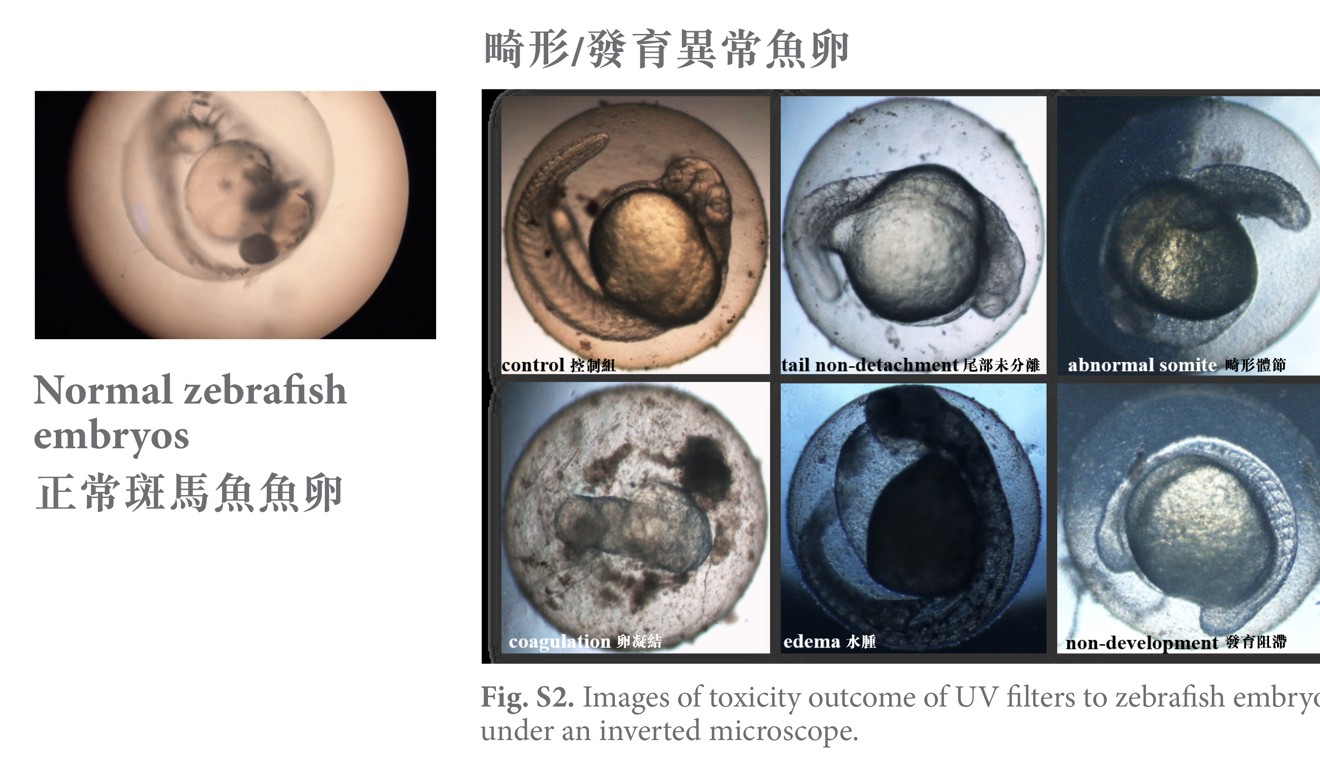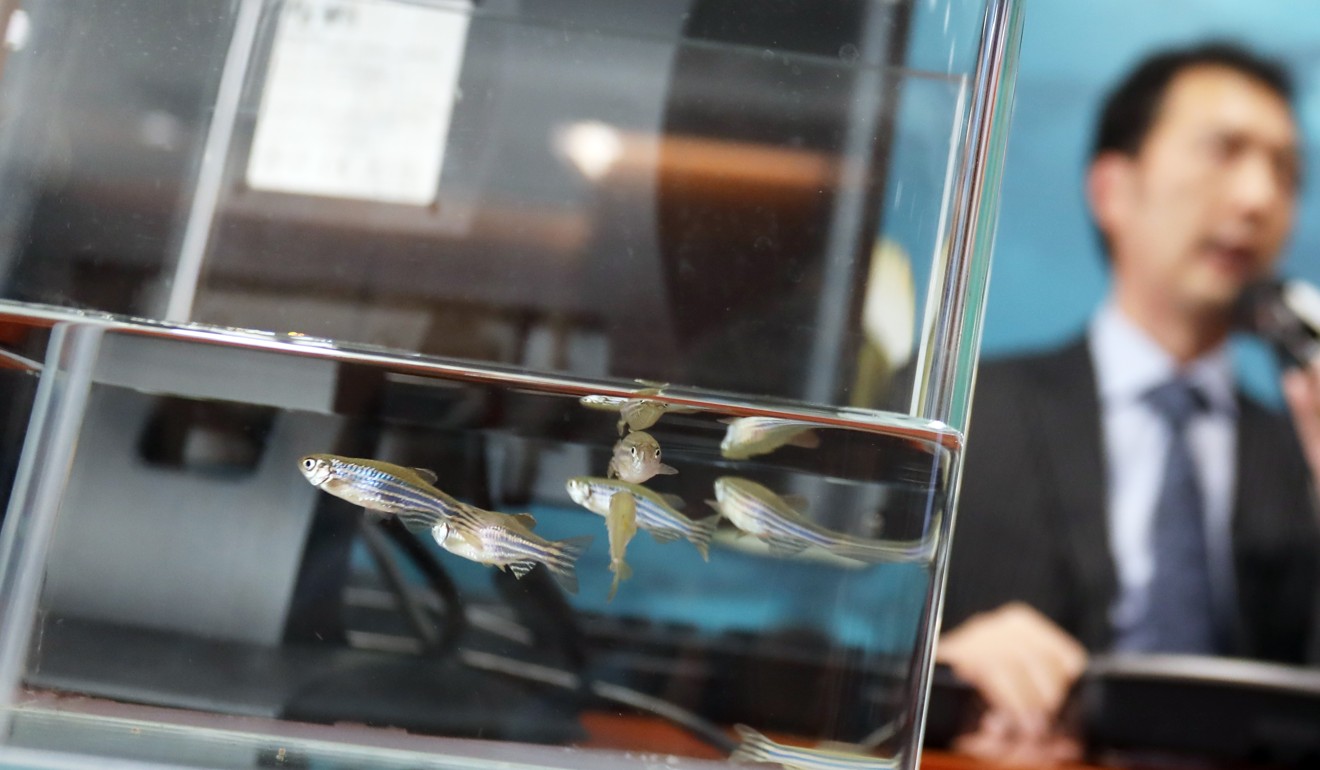
Chemicals in your sunscreen that cause birth defects and infertility found in Hong Kong fish by scientists from Baptist University
Five-year study shows toxins found in popular brands of sun lotion are already in sea around city, and raises concerns that they could enter the food chain
Chemicals that could leave people infertile, and are found in popular brands of sunscreen, have been discovered in fish in the sea off Hong Kong by scientists from Baptist University.
The findings, published in renowned scientific journal Environmental Science & Technology in August, were the result of a five-year study, and show a link between the chemicals and abnormalities or death in the offspring of zebrafish.
“Since more than 70 per cent of the genetic structure of zebrafish resembles that of humans, the effect of these contaminants passing along the food chain to humans and the long-term impact on human fertility cannot be neglected, ” said Kelvin Leung Sze-yin, the associate professor from the Chemical Department of the university.

The study, which was a world first, collected seawater samples from 30 locations off the Hong Kong coast, including at beach areas in Sai Kung, Southern Hong Kong Island, Tuen Mun, and at sewage treatment outfalls in Victoria Harbour, Tolo Harbour and West Tuen Mun.
Researchers found that Benzophenone-3 (BP-3), Ethylhexyl methoxycinnamate acid (EHMC) and Octocrylene (OC) were the three most abundant ultra violet (UV) filters in the samples.
In further experiments, the team fed zebrafish with polluted shrimp. After 47 days, the death rate of zebrafish embryos in 24 hours increased six times to nearly 60 per cent. While the 72-hour hatching rate decreased significantly from 80 per cent, to less than 30 per cent.
“After human use, the organic or chemical UV filters in sunscreens are discharged into the sea, either directly by being washed off with seawater, or indirectly through discharge of waste water,” said Leung who led the research.
Your sunscreen may be killing marine life, Hong Kong study finds
“Eventually, they enter the sea, thereby posing a threat to the marine organism and the ecosystem.”
The study also showed that the combination of the three chemicals increased their accumulation, compared with the presence of every single one of them.
“It shows ‘a mixture effect’. In simple words, one plus one, plus one, does not equal three. It’s a multiplier effect,” Leung said.
There are two types of sunscreen that are most popular among beach goers. The most commonly used are physical blockers, which reflect or scatter UV radiation. The other kind absorbs radiation with chemicals.

Leung recommended that people use natural, mineral-based sunscreen, or wear sun-protecting clothing.
Each year, about 6,000 to 14,000 tonnes of sunscreen ends up in the world’s oceans, according to a United States study in 2015. The chemicals of which have already been shown to cause environmental damage such as coral bleaching.
In the future, Leung’s team plan to undertake further research on the long-term impact of UV filters on humans and the ecosystem.

